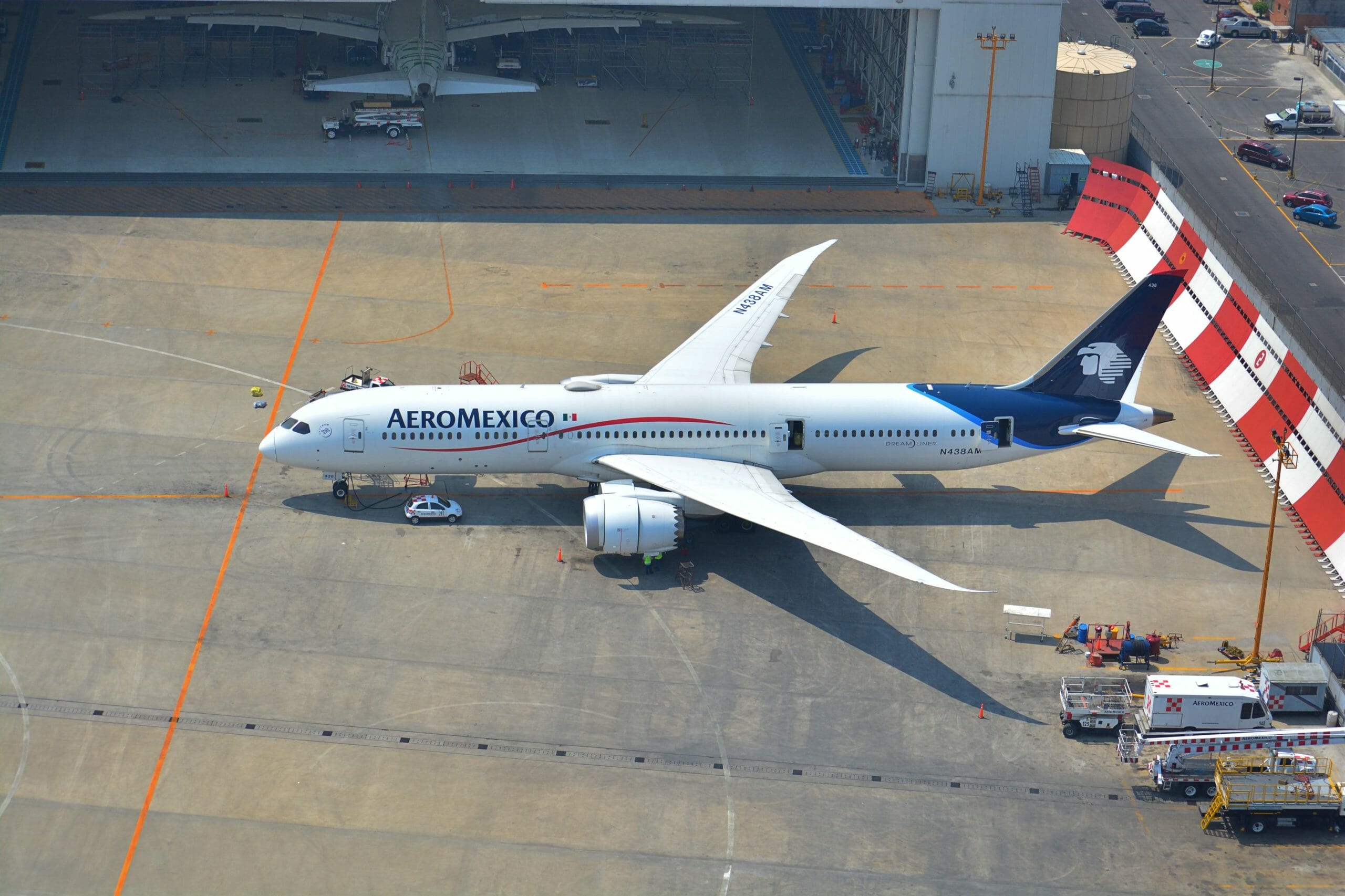
Photo: Daniel Martinez Garbuno
Aeromexico is on the spot. It has until January 7 to reach four agreements with four different labor unions as part of its Chapter 11 reorganization. The Mexican airline is already on extra time since the original deadline was December 31, and it failed to secure new cost-reduction agreements with the workers.
The consequences of failing to reach a new permanent agreement with its four labor unions could be dire.


What could the consequences be?
Currently, Grupo Aeromexico is in Chapter 11 bankruptcy in the US. The Court already approved the US$1 billion DIP Financing of the airline, of which Aeromexico has already withdrawn US$375 million. The lender is Apollo Global Management, a firm based in the US.
The airline missed the first deadline on December 31 and now is in an extended cure time to avoid the potential event of default. If it fails to achieve a new agreement, Apollo Global Management could ask the court to be relieved from the automatic stay. That would allow the lender to demand payment or exercise the liens it has on the airline’s assets. Apollo would be authorized to discontinue honoring its pending obligations.
That doesn’t mean that Apollo would discontinue its pending obligations, but it is allowed to do so at any given moment. For Aeromexico, failing to reach an agreement would put the airline closer to Chapter 7. If Aeromexico is left without funding and forced to pay the loan it has received so far, it would have approximately two months of available cash left.
A closer look at Aeromexico’s finances and operational reports
By December 4, Aeromexico had US$418 million in liquidity, of which US$375 came from the Apollo withdrawals. The Mexican airline was in a dangerous situation without these loans, as it only had $US60 million in liquidity and a growing cash burn due to the COVID-19 crisis.
According to sources within the company, Apollo asked Aeromexico to reduce CASK big time. Therefore, Apollo is demanding that 25% of the workforce in the airline be furloughed. To date, the airline has laid off 766 flight attendants and 677 ground crew. Additionally, around 260 pilots are on temporary leave without salaries. Just by laying off the 677 ground crew workers, the airline will have annual savings of US$17.8 million. Still, Aeromexico’s CASK in 2020’s third quarter was US$0.095, an increase of US$0.028 year-on-year. Volaris’s CASM was US$0.067. In Mexican Pesos, Aeromexico’s CASK was 2.091 pesos, while Viva Aerobus’s CASK was 0.91 pesos.
While Volaris and Viva Aerobus are low-cost operators, it shows the difference between them and Aeromexico. Moreover, Grupo Aeromexico has to compete directly on domestic routes with these two ULCCs, and so far, it is behind in the recovery. By November, Volaris’ traffic was down 37.4% compared to January 2020. Viva Aerobus was 38.9% down. Grupo Aeromexico was 47.1% down.
The Unions are against the changes
Aeromexico has four labor unions: ASPA, which represents the pilots; ASSA, and STIA, representing the cabin crew; and Independencia, which represents ground workers. So far, only Independencia has agreed to the proposed changes to the Collective Contracts. On the other side, the pilots are adamantly against the changes. Meanwhile, ASSA and STIA are moving forward in the negotiations, despite claims issued by some workers.
The clock is ticking and moving fast. We still expect that the Unions and Aeromexico will get to a final agreement before the extended time expires. Otherwise, the airline would face an uphill battle for its survival.




